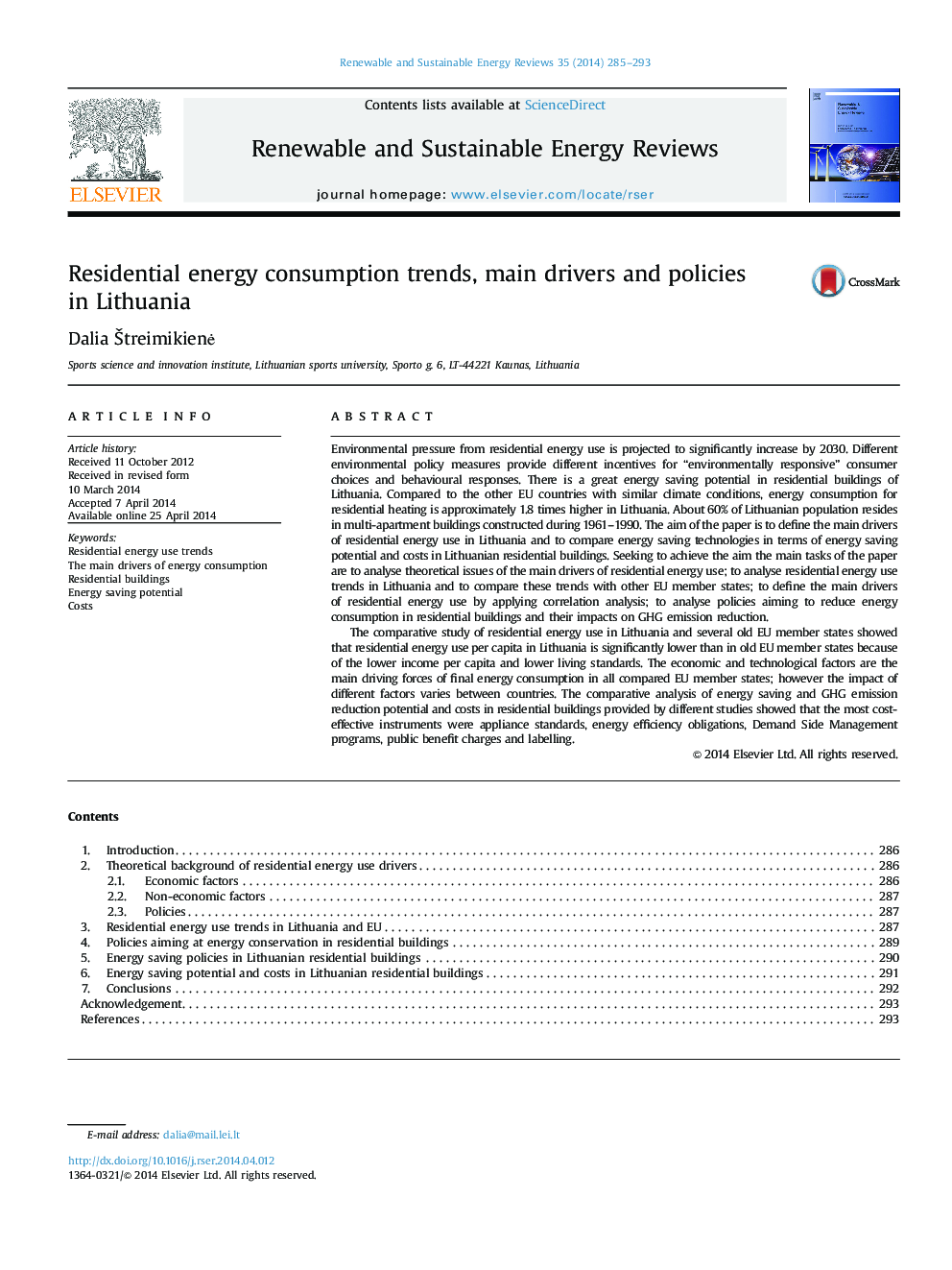| کد مقاله | کد نشریه | سال انتشار | مقاله انگلیسی | نسخه تمام متن |
|---|---|---|---|---|
| 1750385 | 1522350 | 2014 | 9 صفحه PDF | دانلود رایگان |
Environmental pressure from residential energy use is projected to significantly increase by 2030. Different environmental policy measures provide different incentives for “environmentally responsive” consumer choices and behavioural responses. There is a great energy saving potential in residential buildings of Lithuania. Compared to the other EU countries with similar climate conditions, energy consumption for residential heating is approximately 1.8 times higher in Lithuania. About 60% of Lithuanian population resides in multi-apartment buildings constructed during 1961–1990. The aim of the paper is to define the main drivers of residential energy use in Lithuania and to compare energy saving technologies in terms of energy saving potential and costs in Lithuanian residential buildings. Seeking to achieve the aim the main tasks of the paper are to analyse theoretical issues of the main drivers of residential energy use; to analyse residential energy use trends in Lithuania and to compare these trends with other EU member states; to define the main drivers of residential energy use by applying correlation analysis; to analyse policies aiming to reduce energy consumption in residential buildings and their impacts on GHG emission reduction.The comparative study of residential energy use in Lithuania and several old EU member states showed that residential energy use per capita in Lithuania is significantly lower than in old EU member states because of the lower income per capita and lower living standards. The economic and technological factors are the main driving forces of final energy consumption in all compared EU member states; however the impact of different factors varies between countries. The comparative analysis of energy saving and GHG emission reduction potential and costs in residential buildings provided by different studies showed that the most cost-effective instruments were appliance standards, energy efficiency obligations, Demand Side Management programs, public benefit charges and labelling.
Journal: Renewable and Sustainable Energy Reviews - Volume 35, July 2014, Pages 285–293
